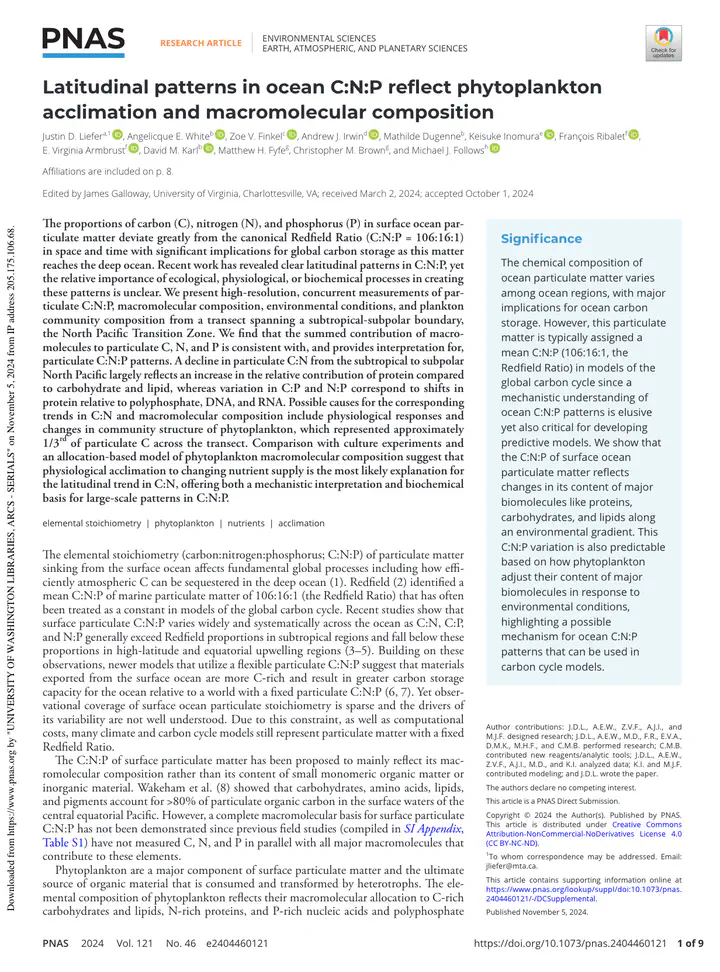Latitudinal patterns in ocean C:N:P reflect phytoplankton acclimation and macromolecular composition

Abstract
The proportions of carbon (C), nitrogen (N), and phosphorus (P) in surface ocean particulate matter deviate greatly from the canonical Redfield Ratio (C:N:P = 106:16:1) in space and time with significant implications for global carbon storage as this matter reaches the deep ocean. Recent work has revealed clear latitudinal patterns in C:N:P, yet the relative importance of ecological, physiological, or biochemical processes in creating these patterns is unclear. We present high-resolution, concurrent measurements of particulate C:N:P, macromolecular composition, environmental conditions, and plankton community composition from a transect spanning a subtropical-subpolar boundary, the North Pacific Transition Zone. We find that the summed contribution of macromolecules to particulate C, N, and P is consistent with, and provides interpretation for, particulate C:N:P patterns. A decline in particulate C:N from the subtropical to subpolar North Pacific largely reflects an increase in the relative contribution of protein compared to carbohydrate and lipid, whereas variation in C:P and N:P correspond to shifts in protein relative to polyphosphate, DNA, and RNA. Possible causes for the corresponding trends in C:N and macromolecular composition include physiological responses and changes in community structure of phytoplankton, which represented approximately 1/3rd of particulate C across the transect. Comparison with culture experiments and an allocation-based model of phytoplankton macromolecular composition suggest that physiological acclimation to changing nutrient supply is the most likely explanation for the latitudinal trend in C:N, offering both a mechanistic interpretation and biochemical basis for large-scale patterns in C:N:P.